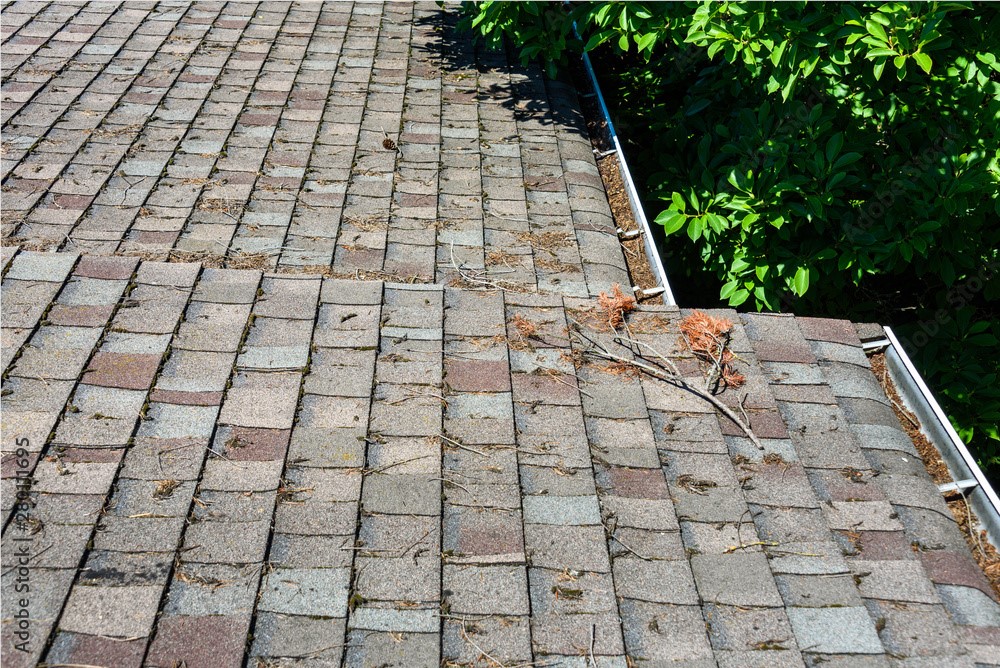
Navigating a winter roof leak in Michigan can feel like solving a puzzle, and the thought of waiting until spring might seem like the simplest solution. Yet, a winter roof leak could be a red flag for crucial underlying issues that demand immediate attention! But don’t worry, because the team at Kearns Brothers have gathered insights into the possible causes of these chilly season leaks and provided answers to common questions you might have. Let's tackle this challenge together!
Understanding Why Your Roof Leaks in The Winter
Embarking on the discovery of a roof leak may bring a wave of stress but fear not finding its source is your first ticket to peace of mind. Once pinpointed, you're empowered to take the necessary steps for a resilient and functional roof. As winter sets in, we dive into the common culprits behind those elusive leaks, from the troublesome ice dams to the subtle yet impactful attic condensation. Join us on this journey of unraveling the winter roof mysteries and fortifying your home against the chill.
Formation of Ice Dams:
During winter, the interplay of melting and refreezing snow creates ice dams along the roof's edge. These solid barriers of ice exert pressure on asphalt shingles, leading to potential displacement, lifting, or loosening. This displacement not only exposes the underlying roofing structure but also obstructs the natural drainage of melted ice and snow. The combination of displaced shingles and hindered drainage poses a risk of water damage, as pooled water may infiltrate the compromised areas of the roof, resulting in leaks and potential interior harm.
Eliminate ice dams to prevent water damage and promote proper drainage. Make sure to check out these helpful tips on how to prevent ice dams.
Attic Condensation:
While seemingly subtle, it can have adverse effects on the overall health of your home. As warm indoor air ascends into the attic during the winter, encountering cooler temperatures, condensation becomes a lurking problem.
This excess moisture can pave the way for potential issues that could lead to mold and mildew growth. Not only that, but the consistent formation of condensation could be a potential factor in what’s causing your leak. It’s a good idea to explore your attic ventilation and moisture management to proactively address excess moisture.
Bathroom Exhaust Fans:
Your bathroom exhaust vent could be venting up into the attic. Inspect interior walls for signs of leaks even if not visible externally. Remember that all bathroom exhaust fans should be venting to the outside to prevent the buildup of condensation.
Clogged Gutters:
When your gutters get blocked with leaves and debris, it's like having an ice dam on your roof. These clogged gutters can't effectively direct melted ice and snow away from the edge of roof, causing water to accumulate and potentially lead to leaks. It's essential to deal with clogged gutters promptly to avoid any potential water-related damage to your roof. Promptly clear gutters to avoid water-related damage.
Damaged Flashing:
Let's admit it, we've all tossed some home repair tasks onto the "I'll do that later" list and then completely forgotten about them. When it comes to leaks, flashing problems are a significant concern. If the flashing is compromised, melting ice and snow can find their way in, creating potential leaks. Address flashing repairs promptly to prevent water-related problems.
Damaged Shingles:
Winter storms may damage shingles, causing leaks and potential structural damage. Inspect and repair damaged shingles, especially after severe weather conditions. Being proactive in identifying and addressing these issues can save you from more significant problems down the line.
So, you found a roof leak, now what?
The first thing you are going to want to do is look at what services your local roofing company offers. It might be a good idea to hire a professional, so that they can give you an expert’s opinion on the matter. Identifying the issue early not only saves you from future complications but also helps avoid the higher costs associated with extensive roof repairs. Swift action in conducting a thorough inspection is essential for preserving your roof's integrity and preventing potential problems, especially given the challenges often posed by winter roof leak repairs.
Roof Leak Repair in Winter: Debunking Myths and Exploring Solutions
Addressing a roof leak in winter, or deciding who to contact for repairs, doesn't have a one-size-fits-all solution. While a roofing professional can often provide the needed service, it's crucial to consider weather conditions and potential hazards to decide if delaying repairs until spring is a safer option.
However, initiating a conversation with a roofer and beginning the planning process for your repair early on is a wise decision. Procrastination might lead to additional complications, so act promptly—reach out to roofing contractors without hesitation!
Preventing Roof Leaks in The Winter
To avoid winter roof leaks, begin by clearing your gutters before the cold weather sets in. Verify that you have proper insulation in good condition, addressing any potential issues. Insufficient insulation could contribute to your leak problems. Take a proactive stance by scheduling a roof inspection with a professional roofing company before winter arrives.
Tags
Subscribe to Kearns Brothers's Blog



Comments